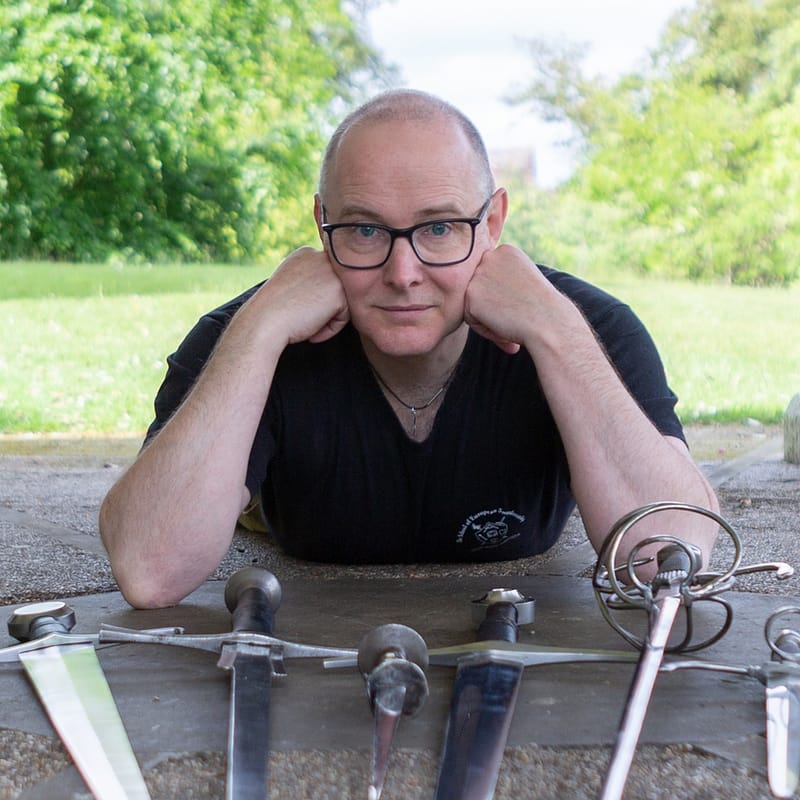This Thursday, November 30th, I complete a half-century. And even more exciting than me getting a year older (which to be fair is an annual event), the TOP SECRET project I’ve been working on with Katie Mackenzie is ready!!
The Swordschool Training Year Planner

Plan your training like a pro!
With this beautiful full-colour planner you can set goals, plan your training, and review your progress. Embark on a transformative journey using the Swordschool Training Year Planner to tailor your approach.
Aspire to mastery of the Art of Arms, and craft a lifestyle that will lead you towards it. From daily training goals to annual events, this planner works from the specific details of daily life to the overall theme of your year. Connect with like-minded enthusiasts on swordpeople.com and share your progress with the tag #planner. Design your days, map out the year, create monthly themes, and reflect with quarterly reviews.

This was Katie’s idea, and her graphic design work, so full credit to her. Bob Charrette very kindly let me use his line-art versions of the illustrations from the Getty ms (which he originally created for his excellent book Armizare).
My contribution was the introduction, and the overall structure of the planner.
You can get it in print, either paperback or spiral-bound, or to save on shipping costs, you can get the pdf to print at home. Please note, the paperback can be printed and shipped in the USA, but the spiral bound can only be printed in the UK, which will affect shipping times and costs.

To celebrate this major milestone (though why we care so much about numbers that end in a zero, I’m not sure), I’m also running a special sale on The Medieval Longsword course, and The Complete Rapier course, and all ebooks and audiobooks. You can find the courses here:
https://swordschool.shop/pages/guys-50th-birthday-sale
And because of the whole “50” thing, you can have them for just £50 each (plus sales tax if your location requires it), which is an 85% discount on their usual price.
The discount will run from today (Nov 28th), through to the end of the weekend (Sunday Dec. 3rd).
Until then, you can use this code to get 50% off the usual price on all digital products (ebooks and audiobooks) on https://swordschool.shop:
guyturns50
(all lower-case, and no spaces either end).
Please note the sale offers don’t extend to the print books, because the printers and shippers don’t seem to care about my birthday at all (astonishing!), so the costs of printing and shipping remain quite high.
Feel free to share the courses and the discount code with anyone you think might benefit from them. These discounts will expire on Monday December 4th.





